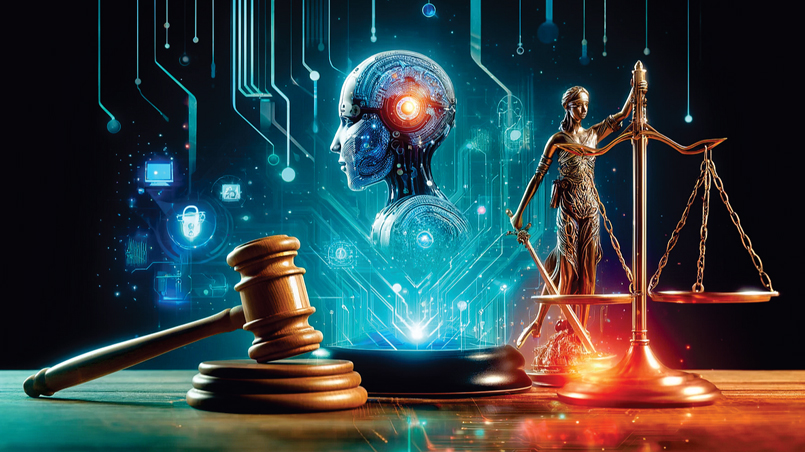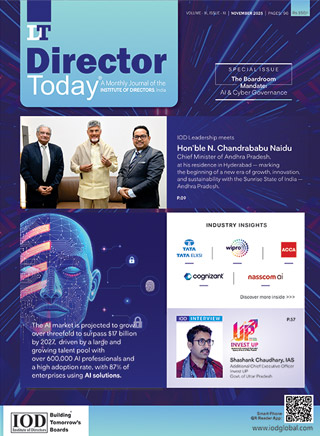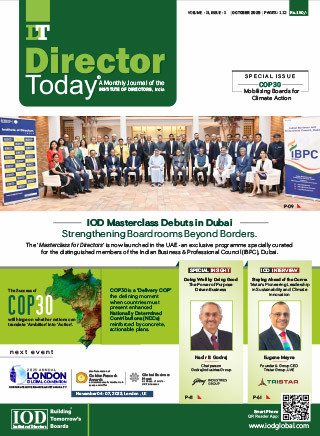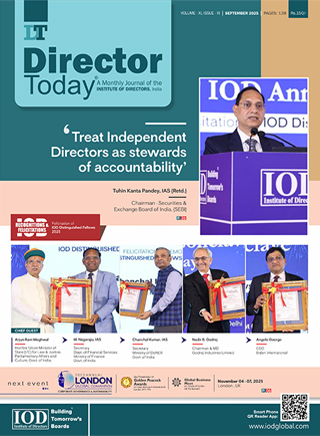Ageism and the DEIB Blind Spot

As India navigates the dual challenge of an ageing population and a growing youth workforce, it has a critical opportunity to promote age inclusion.
Introduction
Diversity, Equity, Inclusion, and Belonging (DEIB) are now core to workplace culture, shaping how companies hire, promote, and retain talent. Yet age remains a major blind spot. While gender, race, and disability receive growing attention, age-related bias is often ignored, despite its widespread impact. Globally, especially post-COVID and with rising AI adoption, workers over 40 face increasing employment bias. In India, the issue is compounded by the lack of legal protections against age discrimination. Without clear policies to address age bias, both older and younger professionals face stereotypes that limit opportunities, stall careers, and waste valuable talent.
Legal and Policy Gaps in Addressing Age Discrimination in India
India currently lacks a dedicated legal framework explicitly prohibiting age discrimination in employment. While some social welfare policies support older adults, they do not extend to workplace protections.
The Constitution, via Article 15(1), prohibits discrimination based on religion, race, caste, sex, and place of birth, but not age. Article 16 offers similar protections in public employment, yet age is not among the explicitly protected categories. Likewise, major labour reforms such as the Code on Wages (2019) and the Industrial Relations Code (2020) do not identify age as a protected characteristic in employment practices.
This results in a policy gap, where individuals facing age based bias, whether younger or older, have limited legal recourse. As workplace demographics evolve, this gap presents an opportunity for law makers and stakeholders to introduce more inclusive protections that align with contemporary workforce realities.
Judicial Interpretation: Limited engagement so far
The Indian judiciary had limited opportunities to address ageism as a standalone constitutional issue. One of the few cases where age and employment intersected was Air India v. Nergesh Meerza (1981). The case involved service regulations that mandated air hostesses retire at age 35 or earlier if they married within the first four years of service or became pregnant. Meanwhile, male cabin crew were allowed to serve until age 58.
In this judgment, the Hon'ble Supreme Court struck down the rules mandating termination upon first pregnancy and the provision giving unchecked discretion to the Managing Director to extend service beyond 35, finding both to be in violation of Article 14 of the Constitution, which guarantees equality before the law and equal protection of the laws. However, it upheld the retirement age disparity between male and female crew, reasoning that they belonged to different cadres with distinct natures of their roles and health considerations.
While the case did touch upon aspects of age and gender biases, the issue of age discrimination was not adjudicated as a standalone constitutional concern. Consequently, the jurisprudential development around ageism remains nascent, with limited precedent addressing it directly under constitutional principles.
Prevalence of Ageism in Indian Workplaces
A study by Randstad India found that 29% of employees over the age of 55 reported experiencing or witnessing ageism, compared to 42% of those under 55, indicating that age bias affects both ends of the age spectrum. Younger professionals often face assumptions of inexperience, while older employees are stereotyped as resistant to change or less technologically adept.
Industries like IT, pharmaceuticals, and healthcare show the highest levels of age related bias. Gender also plays a role: 42% of women surveyed reported encountering ageism, compared to 37% of men. While the difference wasn't statistically significant, qualitative findings pointed to the intersection of age and gender as a compounding factor.
Recruitment emerged as the most common point of bias. Sixty-one percent of respondents observed age-discriminatory practices in job ads, particularly those that specify qualifying age ranges or strict experience requirements. Among these, 57% noted a clear preference for candidates aged 25–34, reflecting a narrow view of the “ideal” hire in many organizations.
Discrimination based on age, whether due to youth or seniority, leads to exclusion from opportunities, underestimation, stress, and reduced workplace belonging.
United States: Age Discrimination in Employment Act (ADEA)
The Age Discrimination in Employment Act of 1967 (ADEA), enforced by the U.S. Equal Employment Opportunity Commission (EEOC), protects individuals aged 40 and above from age-based workplace discrimination. It applies to private employers with 20+ employees, state and local governments, labour organizations, employment agencies, and federal entities. The ADEA prohibits age discrimination in all aspects of employment, including hiring, firing, promotion, compensation, and training. However, individuals must prove that age was the decisive factor in adverse employment actions, such as termination or refusal to hire.
Notably, ADEA protections can be waived under certain conditions. For example, an employer may offer a severance package that includes a waiver of the right to sue for age discrimination under the ADEA. Such waivers, however, must comply with strict standards set out in the Older Workers Benefit Protection Act (OWBPA), which amended the ADEA in 1990 to ensure waivers are “knowing and voluntary.” The OWBPA further strengthens age-based protections by prohibiting discrimination in employee benefit plans, such as health insurance, disability coverage, pensions, and retirement plans. While employers may adjust benefit levels based on cost, they must ensure parity in the value or cost of benefits offered to older and younger workers.
To be valid, a waiver under the OWBPA must:
• Be written in clear, understandable language;
• Refer specifically to ADEA rights or claims;
• Advise the employee to consult with an attorney;
• Provide at least 21 days to consider the agreement (or 45 days in group terminations); and
• Allow seven days to revoke the agreement after signing.
The Impact of Ageism and the Importance of Integrating Age into DEIB Initiatives
Ageism affects both individuals and businesses and isn't limited to older workers. While older employees face stereotypes of being outdated or resistant to change, younger professionals are often dismissed as inexperienced or entitled. Such biases harm morale, job satisfaction, and performance. Discrimination based on age, whether due to youth or seniority, leads to exclusion from opportunities, underestimation, stress, and reduced workplace belonging. Younger workers may be passed over for leadership, while older employees risk being sidelined or pushed into early retirement.
For businesses, ageism stifles innovation, fresh thinking, and continuity by marginalizing both ends of the talent spectrum. Ignoring age bias weakens resilience and limits responsiveness to diverse market needs. Excluding age from DEIB efforts undermines inclusion, reduces generational diversity, and fosters biased workplaces. Organizations that prioritize age inclusion build stronger, more creative, and empathetic teams. In India's multigenerational workforce, embedding age in DEIB is essential for long-term growth and equity.
Recognizing age as a key element of diversity and promoting lifelong learning, intergenerational collaboration, and inclusive policies is both an ethical responsibility and a business imperative.
Recommendations
For Policymakers
Policymakers should introduce comprehensive legislation that explicitly prohibits age discrimination in the workplace. This legislation must clearly define age discrimination, both direct and indirect and provide a framework for addressing it through accessible legal remedies. Enforcement mechanisms should include an independent body to investigate complaints, the ability to impose penalties such as fines or mandatory reinstatement, and mechanisms for periodic audits of age-inclusion practices. Additionally, public awareness campaigns and employer guidelines can help in ensuring that such laws are understood and effectively implemented.
For Employers
Employers play a critical role in combating ageism and embedding age into DEIB strategies. They should revise recruitment and HR policies to remove age-biased language and focus job descriptions on skills and experience over age limits. Training programs to address unconscious bias and promote age awareness are essential, supported by internal policies that prohibit age discrimination and provide confidential, retaliation-free grievance mechanisms.
Skill-building should be prioritized, especially with new technologies, by offering older employees reskilling opportunities tailored to their roles and learning styles. Transition programs like phased retirement, mentoring, or advisory roles can keep older professionals engaged while offering flexibility.
Reverse mentoring, where younger employees support seniors with new tools or cultural trends, encourages mutual respect and learning. Employers should foster mentoring pairs across age, gender, and cultural lines, enabling two-way knowledge sharing and cross generational support. Deliberately composing cross functional teams with diversity enhances innovation, resilience, and empathy, replacing stereotypes with inclusion.
Regular assessments of pay equity must include age as a parameter alongside gender, ethnicity, and other diversity factors. Conducting periodic pay audits helps ensure fairness, and implementing transparent pay structures based on skills, responsibilities, and performance rather than tenure, reduces the risk of age-related wage bias.
Finally, age inclusion must encompass all age groups. While older employees often face overt bias, younger workers also contend with stereotypes that undermine their potential. Employers should foster a culture where contributions are judged on merit, not age, ensuring early career professionals have access to mentorship, leadership opportunities, and recognition. Recognizing age as a key element of diversity and promoting lifelong learning, intergenerational collaboration, and inclusive policies is both an ethical responsibility and a business imperative. When embedded in workplace culture, these practices help all employees feel valued and empowered to contribute meaningfully.
Conclusion
Ageism remains an overlooked issue in India's DEIB efforts, with both older and younger employees facing bias due to the lack of legal safeguards and age-inclusive workplace policies. Older professionals are often excluded from leadership and upskilling, while younger staff are dismissed as inexperienced, undermining diversity, innovation, and institutional memory.
As India navigates the dual challenge of an ageing population and a growing youth workforce, it has a critical opportunity to promote age inclusion. Drawing on global examples like the ADEA and adopting practices like intergenerational mentoring and fair recruitment can help build workplaces that value all age groups.
Inclusion of all ages is not optional; it's key to creating resilient, equitable, and future-ready organizations.
Illustrative Table supporting NO Discrimination based on Age:
| S. No. | Country | Legal Provisions |
| 1. | Canada | Section 15 of the Canadian Charter of Rights; Canadian Human Rights Act 1985; Various Provincial and Territorial Human Rights Acts. |
| 2. | France | The French labour code; Article 432-7 of the Criminal Code. |
| 3. | Germany | General Equal Treatment Act 2006. |
| 4. | China | No specific Provision. |
| 5. | Singapore | Retirement and Re-employment Act 1993. |
| 6. | Switzerland | Swiss Federal Constitution (Article 8, paragraph 2). No separate legislation, some aspects covered in the Swiss Code of Obligations and the Swiss Civil Code. |
| 7. | Russia | Russian Labour Code. |
| 8. | Netherlands | The Constitution of the Netherlands (article 1); Equal Treatment in Employment (Age Discrimination) Act. |
| 9. | South Africa | Employment Equity Act 55 of 1998 ('EEA'); the Labour Relations Act 66 of 1997; and the Promotion of Equality and Prevention of Unfair Discrimination Act 4 of 2000. |
| 10. | New Zealand | The New Zealand Bill of Rights Act 1990 and Human Rights Act 1993. |
| 11. | Japan | Article 9 of the Act on Comprehensively Advancing Labour Measures, and Stabilizing the Employment of Workers, and Enriching Workers' Vocational Lives; Article 90 of the Civil Law (antagonistic to public order and morals); Article 709 of the Civil Law (basis of a tort action). |
| 12. | Australia | The Age Discrimination Act 2004 (Cth). |
| 13. | South Korea | The Prohibition of Age Discrimination in Employment and Aged Employment Promotion Act; The Framework Act on Employment Policy; and the National Human Rights Commission Act. |
| 14. | Egypt | Articles 9 and 53 of the Constitution of Egypt 2014. |
| 15. | Mexico | Article 1, Paragraph 3 of the Mexican Federal Constitution; The Federal Labour Law; the Federal Law to prevent and eliminate discrimination; Article 206 of Mexico City's Criminal Code. |
Authors

Ms. Deeksha Tiwari
She specializes in ESG reporting, advisory, and legal compliance. A law graduate from NMIMS School of Law, she is dedicated to promoting sustainable and responsible business practices.

Dr. Sonal Verma
He is a seasoned corporate lawyer with over 18 years of experience in ESG, regulatory, and compliance frameworks. In furtherance to his BALLB Degree he has accomplished LL.M & Ph.D in law. He is an Amazon best seller author and has made inspiring TedX Talks on ESG & Law. He also actively serves on key Academic and Industry- Legal & regulatory committees in India.
Owned by: Institute of Directors, India
Disclaimer: The opinions expressed in the articles/ stories are the personal opinions of the author. IOD/ Editor is not responsible for the accuracy, completeness, suitability, or validity of any information in those articles. The information, facts or opinions expressed in the articles/ speeches do not reflect the views of IOD/ Editor and IOD/ Editor does not assume any responsibility or liability for the same.

 Quick Links
Quick Links
 Connect us
Connect us




 Back to Home
Back to Home































